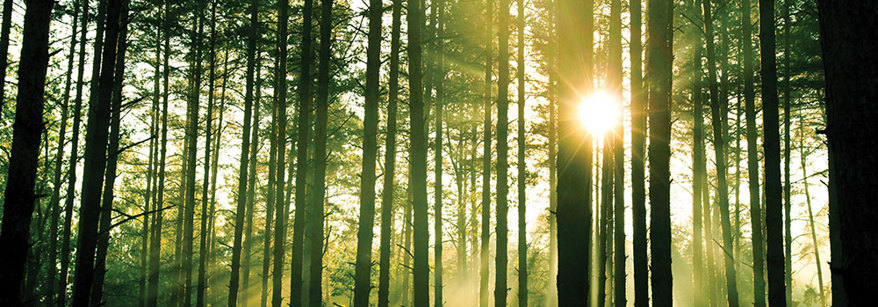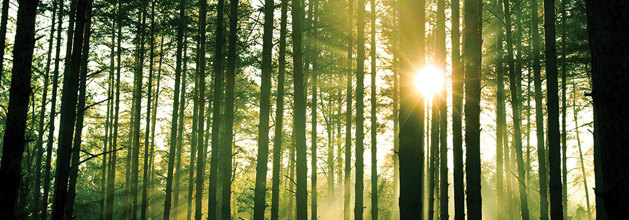Exotic forestry makes up about 16 percent of the land in our region. Most of this forestry is in large tracts like the Kāingaroa Plateau, but there are also many smaller woodlots and farm forestry blocks around the region.
Forest harvesting
It is important that harvesting is well-planned and carried out to minimise erosion and downstream effects. The following guidelines may assist when planning forestry harvesting operations:
New regulations
The National Environmental Standards for Commercial Forestry (NES-CF), formerly the National Environmental Standard for Plantation Forestry (NES-PF) came into force on 3rd November 2023. They are for managing the environmental effects of plantation and exotic continuous-cover forestry (sometimes called carbon forestry).
The regulations will apply to both plantation forestry and exotic continuous-cover forests (carbon forests) that are deliberately established for commercial purposes. They provide nationally consistent regulations to manage the environmental effects of the eight core forestry activities.
These are:
- afforestation
- pruning and thinning to waste
- earthworks
- river crossings
- forestry quarrying
- harvesting
- mechanical land preparation
- replanting
Is the forest covered by the National Environmental Standards for Commercial Forestry (NES-CF)? To find out if the forest is excluded from the NES-CF regulations, consult the flowchart.
There are also certain activities and effects that are not in the scope of the regulations. In most cases, the regulations do not cover plantation forestry activities that occur outside the boundaries of the forest land, such as the effects of logging trucks using public roads. Existing regional and district plan rules will continue to apply to the activities and effects that are outside the scope of the regulations; examples include but are not limited to, cultural and historic heritage, agrichemical use, burning, water yield and milling and processing activities.
How do the new rules affect me?
If you own forestry, or are employed in the industry, it’s important you are aware of the new rules and what they mean.
Some examples of the conditions under the NES-CF regulations are:
- Setbacks when planting next to rivers, lakes, wetlands, and coastal areas. These unplanted strips protect against erosion and sedimentation from afforestation.
- Management plans for afforestation, replanting, earthworks, forest quarrying, and harvesting activities to identify environmental risks and how they'll be managed.
- Identification and maintenance of storm water and sediment control measures for forestry activities.
I need to give Council notice about my forestry activity
The NES-CF regulations require those undertaking an activity in a forestry block greater than one hectare to give notice to Council. These activities include afforestation, forestry quarrying, river crossings, earthworks and harvesting. This is a free and easy to complete process that allows us to monitor the combined effects of activities in an area.
Planting
Forestry can be a profitable land use, particularly for steep and erosion-prone land. Landowners often find that converting difficult parts of their property, such as steep slopes from pasture to trees, improves their overall productivity.
While the main source of income from forestry is generally from harvesting logs, there are many other benefits from planting trees, including:
- Carbon sequestration (removing carbon from the atmosphere)
- Providing shelter
- Stabilising slopes
- Reducing nutrient losses
- Suppressing weeds
- Contributing to biodiversity
Some important factors to consider prior to planting include:
- Overall reasons for afforestation (log harvest, shelter, carbon sequestration, amenity, biodiversity, erosion control)
- Aspect, slope, soil type, elevation, size of block
- Fencing or stock exclusion
- Pest animal and pest plant control
- Access for harvesting machinery if required
These will dictate species selection, establishment costs, the silvicultural regime and overall viability of the project.
Our Land Management Officers are available to provide advice on planting forestry blocks, and grants may be available to assist with forestry establishment under a Riparian Management Plan.
For more information, please refer to Land Management fact sheets on the fact sheets page.
The Manuka and Kānuka Plantation Guide
There is a strong interest across New Zealand in growing Mānuka and Kānuka. The Mānuka & Kānuka Plantation Guide is a tool that has been released through combined funding from several Regional Councils. It provides information on the plants themselves, honey production, oil production, environmental and agricultural benefits, establishing plantations and long term management.
The New Zealand Farm Forestry Association
The New Zealand Farm Forestry Association website has useful information and case studies of establishing trees on farms.
Tane's Tree Trust
Tane's Tree Trust is an organisation promoting the successful planting and sustainable management of indigenous trees by landowners for multiple uses.




